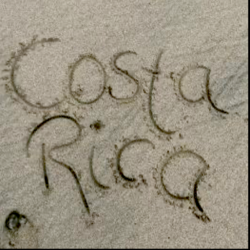Squirrel orphanage Costa Rica – Buenas Dias, amigo pequeno!
Squirrel orphanage Costa Rica – A small, deep sleeping, brown-black fleece ball in a heap of soft cloths and blankets – that was the picture I had of our little foundling when I was allowed to lens into his „little house“ for the first time a few days ago. It’s a cardboard box covered with a large cloth, because like most babies this one still sleeps a lot.

A bad start in life but, Buenas Dias, amigo pequeno
We’re talking about Theodoro, „Theo“, our little squirrel orphan. When the little guy fell out of his nest for still unexplained reasons, he was just one day old and couldn’t even open his eyes. The chances were not good. Since need was at hand, the Paraiso del Cocodrilo turned into an orphanage. Of course, apart from this new main task, we also do our job as hotel accommodation ;).
life of the little protégé
For quite a while the staff fought for the life of the little protégé. With much love he was raised by (tiny) milk bottle. We put everything into it, fed 8 times a day, stroked and sang, we doubted, feared and hoped. And the effort was rewarded! The trembling around our little foundling has an end, because little Theo is a true fighter and meanwhile a lively, playful squirrel of about one month. Giving the milk bottle is now almost like feeding a predator.

Squirrel orphanage Costa Rica
The exact designation of Theos type reads „Bunthörnchen“ and comes from the diverse color-mix in the fur from. Typical characteristic of this race is a black strip, that stretches over the complete back and is flanked by a reddish brown-tone. The tail is black-gray and bushy. The Bunthörnchen are a widespread type in Central America and find themselves from Panama to South-Mexico again. Apart from the fur-color, it differs also through its size from the Eurasian squirrel: It usually cuts off more than the latter with a few centimeters of body length.
Living in the wilderness of Samara
We are all happy that the only helpless baby has made it through the hard times and is thriving before our eyes. The first fight for survival has thus been won.

a little concern
What causes a little concern, however, is the thought of the future. Soon small Theo will change from the milk bottle to grains, fruits and seeds. He already likes to nibble on pumpkin seeds and pieces of coconut. It could become problematic if he outgrows his children’s shoes, or cardboard box, to put it another way.
He is already very lively: After his meals, a good burp is made and then the environment is explored in a playful way. Of course, a squirrel is not a pet, but must return to the wild sooner or later. The transition from feeding to independent food search and self-sufficiency becomes difficult as with all hand-raised animal babies. After all, they do not know their natural environment.
free-living
As far as food procurement and nest building are concerned, we as an adoptive family cannot replace our true parents. In short, we don’t yet know what will happen to Theodoro later on. We hope that he will soon be scampering across trees and meadows with his full-grown, free-living companions and living side by side with the many animals around our jungle lodge. For example, the friendly coatis, who has been coming to pick up a banana snack in the afternoon for a few days.
Squirrel orphanage Costa Rica Buenas Dias, amigo pequeno!
An adult red-tailed squirrel measures an average of 20-28 cm without a tail and weighs less than 500 grams. They are usually reddish brown in color, but some exceptions are much darker. The color of their long and bushy tails always rusts like red color.
Welcome to the eco lodge samara Costa Rica
enjoy magnificent tropical beaches..

But that’s another story…
-
The Dino Dinosaur Adventure Trail is here around the corner!
rescue center costa rica – costa rica animal sanctuary guanacaste – costa rica animal rescue center volunteer – wildlife sanctuary manuel antonio – alturas wildlife sanctuary – costa rica animal rescue – Squirrel orphanage Costa Rica


